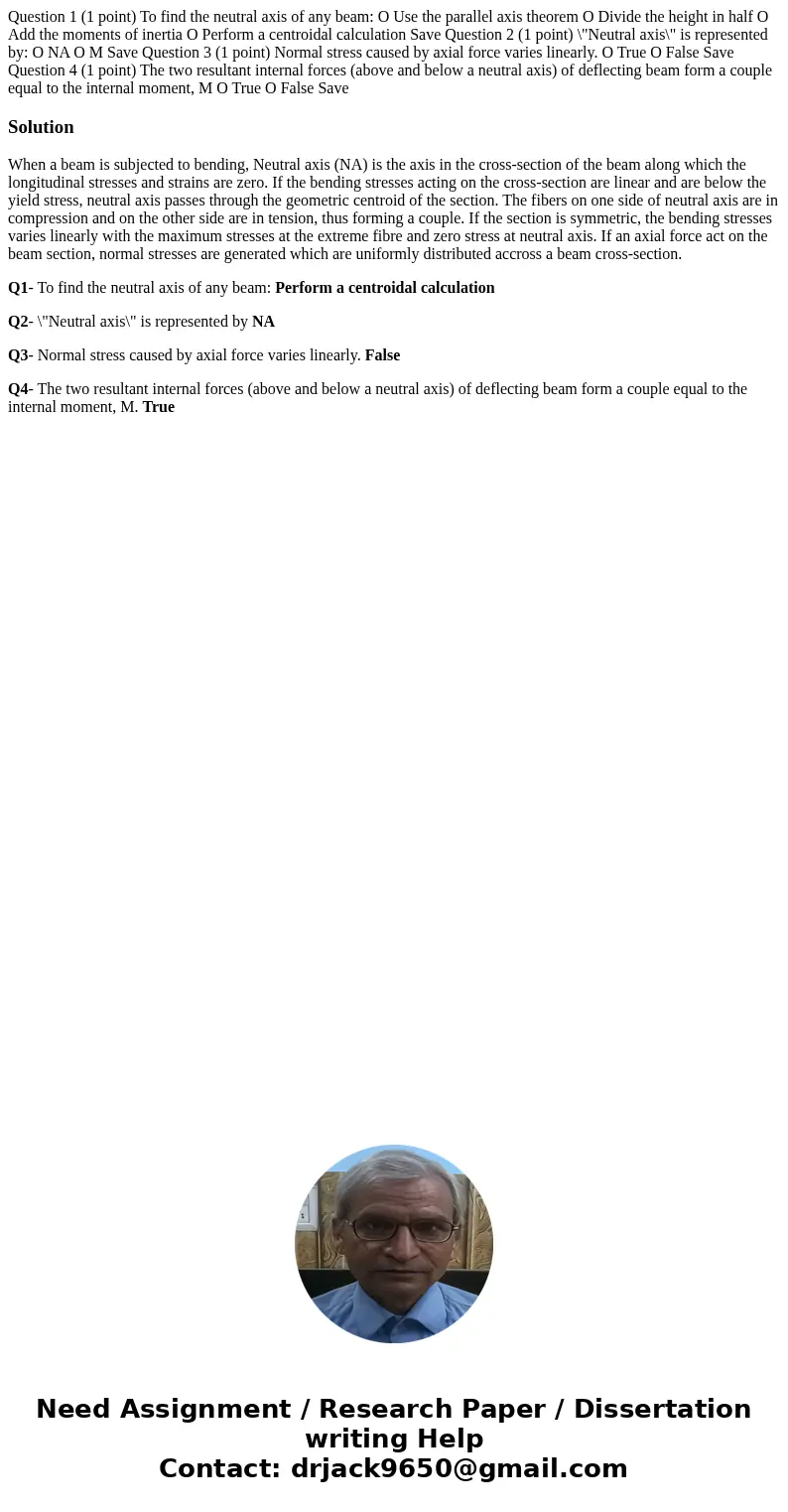Question 1 1 point To find the neutral axis of any beam O Us
Solution
When a beam is subjected to bending, Neutral axis (NA) is the axis in the cross-section of the beam along which the longitudinal stresses and strains are zero. If the bending stresses acting on the cross-section are linear and are below the yield stress, neutral axis passes through the geometric centroid of the section. The fibers on one side of neutral axis are in compression and on the other side are in tension, thus forming a couple. If the section is symmetric, the bending stresses varies linearly with the maximum stresses at the extreme fibre and zero stress at neutral axis. If an axial force act on the beam section, normal stresses are generated which are uniformly distributed accross a beam cross-section.
Q1- To find the neutral axis of any beam: Perform a centroidal calculation
Q2- \"Neutral axis\" is represented by NA
Q3- Normal stress caused by axial force varies linearly. False
Q4- The two resultant internal forces (above and below a neutral axis) of deflecting beam form a couple equal to the internal moment, M. True

 Homework Sourse
Homework Sourse